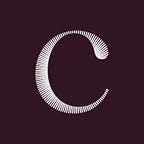Interview with artist Ondrej Zunka
laCollection’s Head Curator interviews London-based digital artist and creative director Ondrej Zunka.
Ondrej Zunka began experimenting with design and digital art after a creative pivot that followed a master’s degree in Economy and System Engineering. He has since worked with various esteemed design houses around the world and gained a reputable status in the commercial design world.
Marlène Corbun (Head Curator for laCollection) : How did you become an artist?
Ondrej Zunka: It was quite a gradual and organic process. It started when I encountered 3D software as somewhat of a diversion from the degree in Economy and System Engineering I was studying at the time. I taught myself to use the softwares via the internet, and I fell in love with digital art and design then.
My fascination with this newly found discipline lead me to discovering more and more inspiration from the works of individuals and creative studios alike. My career took shape as a 3D motion designer and I ended up working at some of the most renowned 3D design studios around the world where I had the opportunity to learn from the best creatives in the field. I now run my own 3D design practice, zunc.studio, in London.
Alongside this, it’s very important to me to have my own artistic focus. I love learning and exploring new things, and often the technical process guides the art. Making art is a way to express what I’ve learned and what I currently pay attention to without using words.
MC: Your work is very much influenced by nature, especially your series “The Fleur,” notably showing our interdependencies with all species. Do you think digital art can help solve society’s issues? Is it the purpose of your art?
OZ: In my opinion, art can help indirectly by telling a story. Through the framework of visual narrative, art can inspire and also educate by bringing awareness to certain issues — think Olafur Eliasson. Certain professions in science, design and engineering may directly be doing more to solve the environmental damage done by humans, but I believe by converging across fields we can work together to do more. If there is some purpose to my art it would be to share a little bit of how incredible I think the natural world is and how ridiculous it is we think of ourselves as a separate part of this system.
MC: What are your main sources of creativity?
OZ: Natural systems. This might be due to the subject of my studies but I find it very beautiful that the natural world tends to resolve into a perfect equilibrium as a self-sustaining system. There’s a lot we can learn from this as we’re progressing towards better ways to coexist with the planet as a species.
It’s exciting to see new trends that are looking to nature as a guide for design solutions. I’ve seen many new companies and also design students looking into alternatives to fossil fuels for materials, such as Algae or Mycelium. So that’s very inspiring to see.
A theme I’m currently exploring, which is less tangible, is invisible forces, like wind and currents. Can you see wind? Does a leaf move or is it moved?
We often focus on and react to what’s happening right in front of us, in the moment, because everything that leads up to that moment is too complex to comprehend. But just like a leaf or a blade of grass being moved by a breeze, it’s vital to consider the invisible forces that influence us.
I would argue that an individual’s actions are more often than not like the leaves reacting to wind, with the wind being our environmental, genetical and societal influences.
